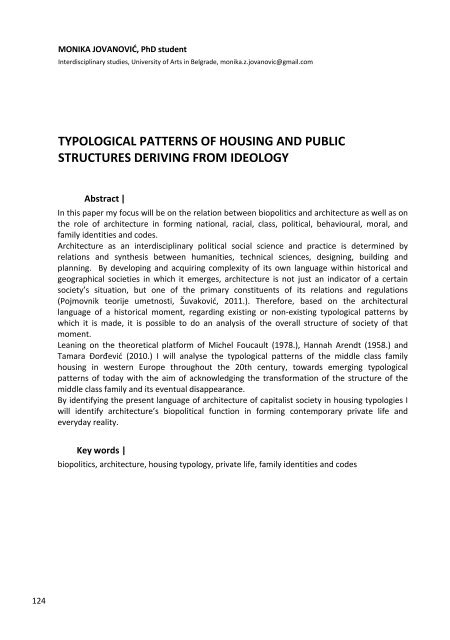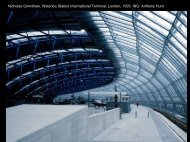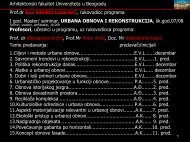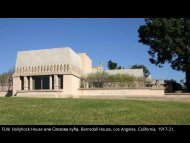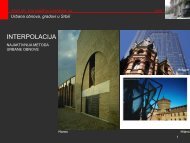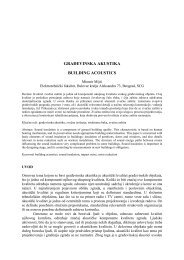Architecture and Ideology
Architecture and Ideology
Architecture and Ideology
You also want an ePaper? Increase the reach of your titles
YUMPU automatically turns print PDFs into web optimized ePapers that Google loves.
124<br />
MONIKA JOVANOVIĆ, PhD student<br />
Interdisciplinary studies, University of Arts in Belgrade, monika.z.jovanovic@gmail.com<br />
TYPOLOGICAL PATTERNS OF HOUSING AND PUBLIC<br />
STRUCTURES DERIVING FROM IDEOLOGY<br />
Abstract |<br />
In this paper my focus will be on the relation between biopolitics <strong>and</strong> architecture as well as on<br />
the role of architecture in forming national, racial, class, political, behavioural, moral, <strong>and</strong><br />
family identities <strong>and</strong> codes.<br />
<strong>Architecture</strong> as an interdisciplinary political social science <strong>and</strong> practice is determined by<br />
relations <strong>and</strong> synthesis between humanities, technical sciences, designing, building <strong>and</strong><br />
planning. By developing <strong>and</strong> acquiring complexity of its own language within historical <strong>and</strong><br />
geographical societies in which it emerges, architecture is not just an indicator of a certain<br />
society’s situation, but one of the primary constituents of its relations <strong>and</strong> regulations<br />
(Pojmovnik teorije umetnosti, Šuvaković, 2011.). Therefore, based on the architectural<br />
language of a historical moment, regarding existing or non‐existing typological patterns by<br />
which it is made, it is possible to do an analysis of the overall structure of society of that<br />
moment.<br />
Leaning on the theoretical platform of Michel Foucault (1978.), Hannah Arendt (1958.) <strong>and</strong><br />
Tamara Đorđević (2010.) I will analyse the typological patterns of the middle class family<br />
housing in western Europe throughout the 20th century, towards emerging typological<br />
patterns of today with the aim of acknowledging the transformation of the structure of the<br />
middle class family <strong>and</strong> its eventual disappearance.<br />
By identifying the present language of architecture of capitalist society in housing typologies I<br />
will identify architecture’s biopolitical function in forming contemporary private life <strong>and</strong><br />
everyday reality.<br />
Key words |<br />
biopolitics, architecture, housing typology, private life, family identities <strong>and</strong> codes


